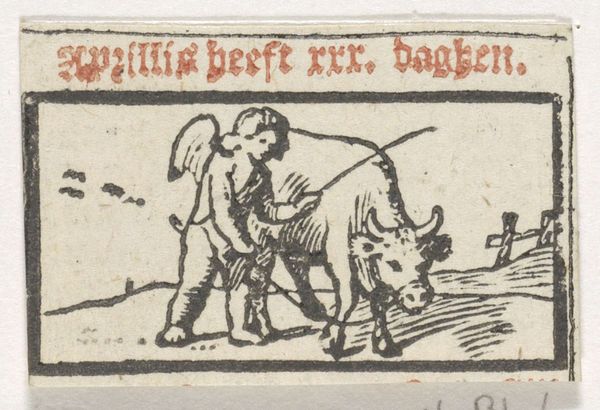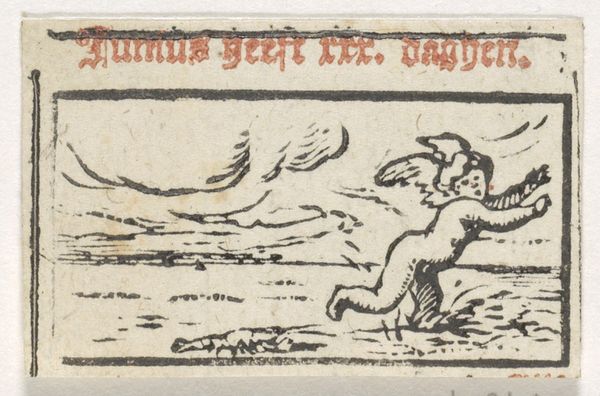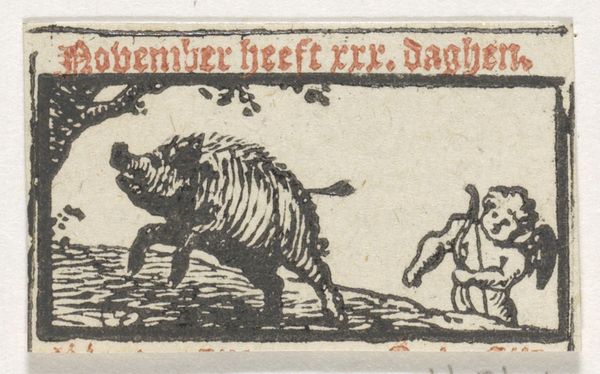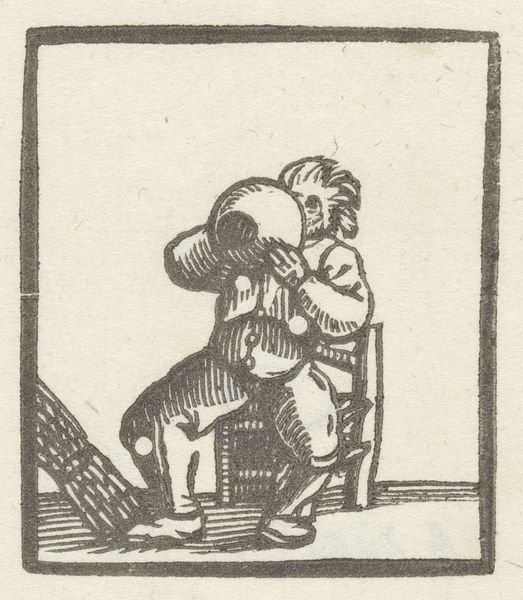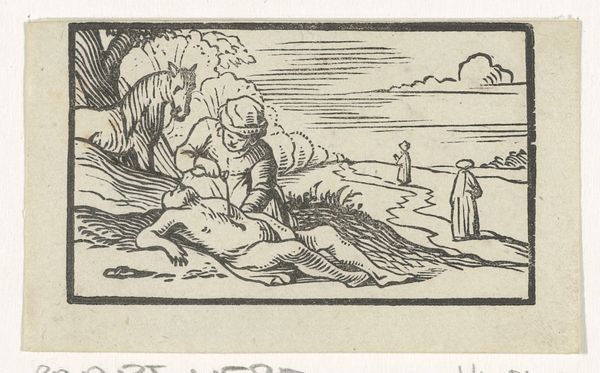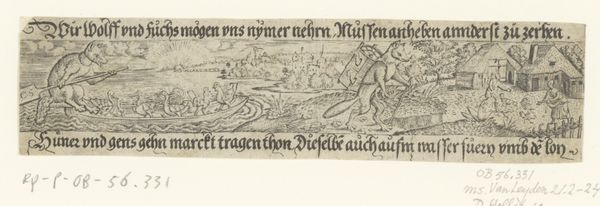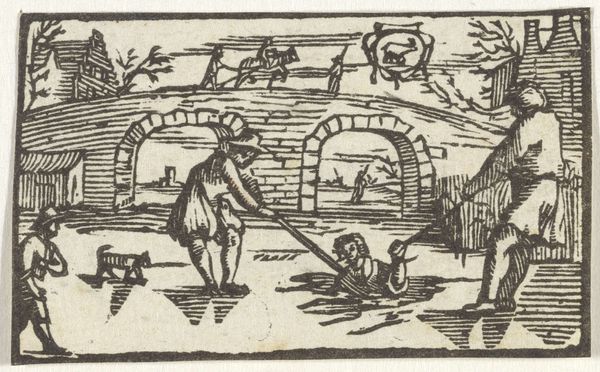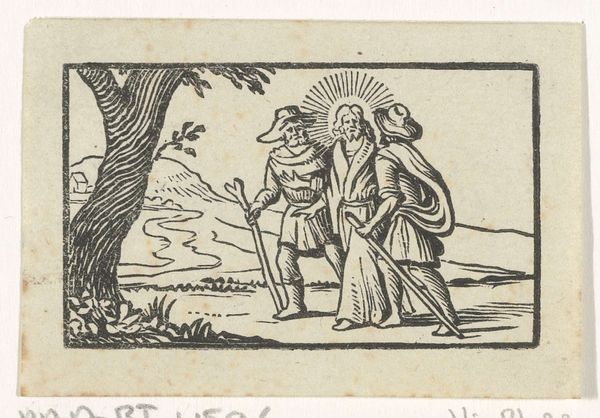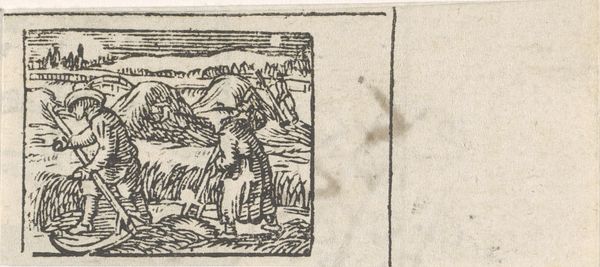
print, ink, engraving
# print
#
figuration
#
ink
#
line
#
genre-painting
#
engraving
#
miniature
Dimensions: height 22 mm, width 38 mm
Copyright: Rijks Museum: Open Domain
Dirck de Bray created this small woodcut, titled 'Juli,' in the Netherlands sometime in the second half of the 17th century. With its depiction of a cherubic figure amidst the harvest, this print likely relates to contemporary Dutch agricultural practices, which were some of the most advanced in Europe at the time. As we can see from the inscription at the top, these images were calendar prints which tracked the passing of the months and the changing of the seasons. They served a function in regulating civic and religious life. To fully understand these prints, we have to consider how the economic and social life of the Dutch Republic depended on the harvest. And also, we have to examine the tradition of printmaking in the Netherlands. Prints like this could be reproduced cheaply and distributed widely, making them a highly effective medium for conveying information and shaping public perceptions. The visual and material culture of the early modern Netherlands can tell us a lot about the structures of feeling in that society.
Comments
No comments
Be the first to comment and join the conversation on the ultimate creative platform.

